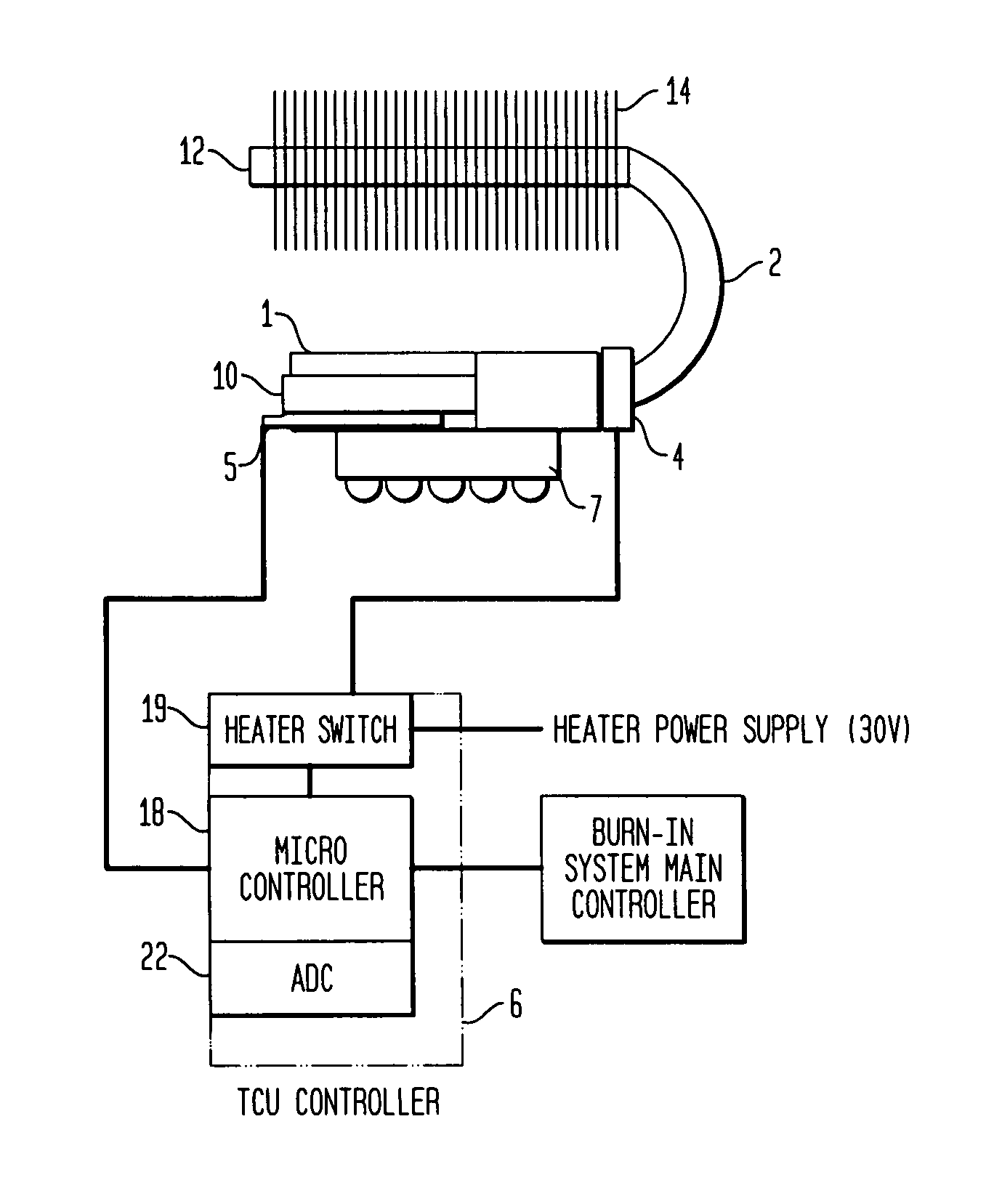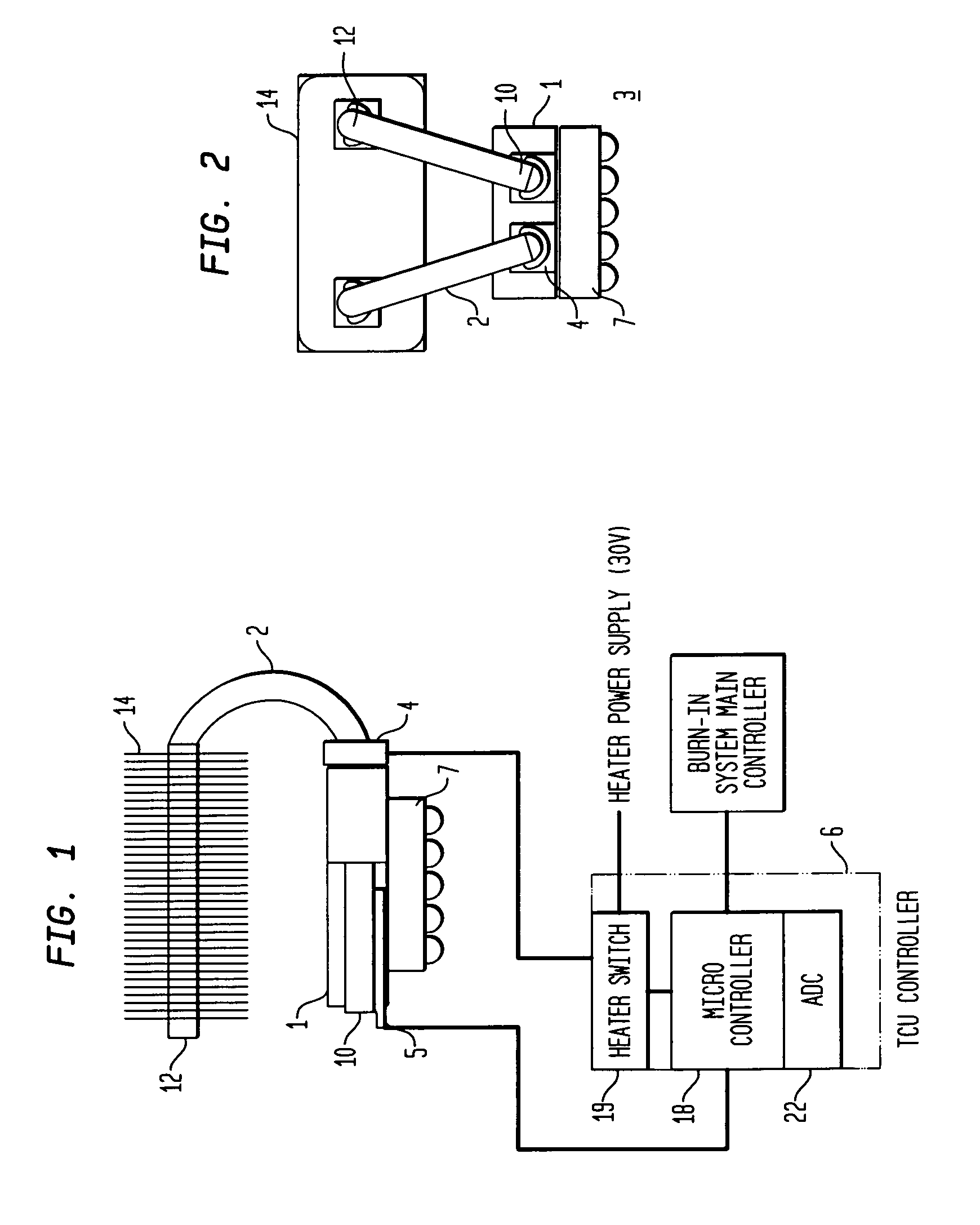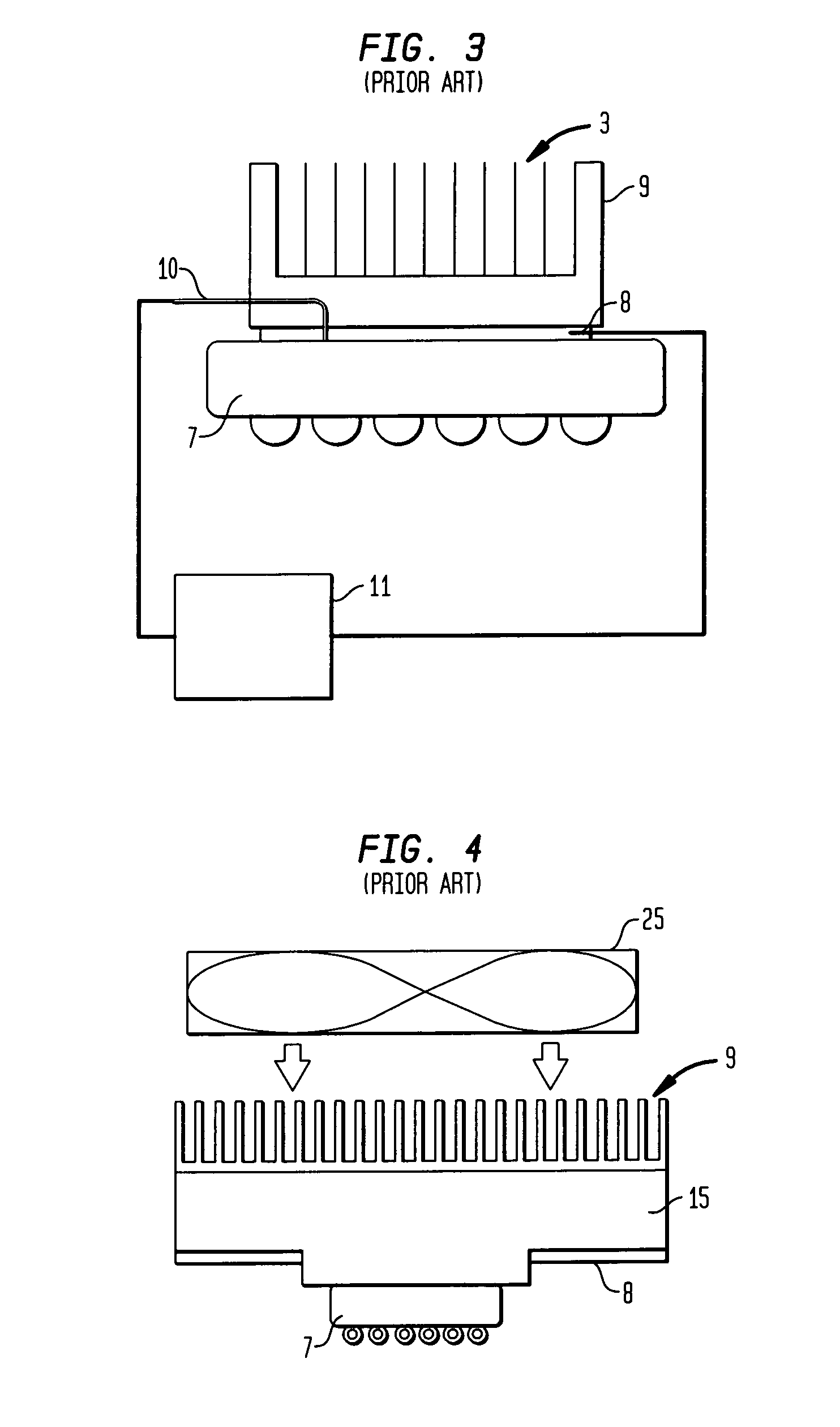Thermal control unit for semiconductor testing
a control unit and semiconductor technology, applied in the field of semiconductor control units for semiconductor testing, can solve the problems of more difficult control of the temperature of the semiconductor device during burn-in, semiconductor device over 100 watt generation, and even higher electrical consumption of the latest semiconductor device, so as to reduce the rate of heat transfer from the semiconductor device to the heat pipe, and reduce the rate at which the heat pipe conducts heat
- Summary
- Abstract
- Description
- Claims
- Application Information
AI Technical Summary
Benefits of technology
Problems solved by technology
Method used
Image
Examples
Embodiment Construction
[0034]FIG. 1 is a schematic diagram of an active thermal control system for regulating the temperature of a device under test (DUT). For purposes of the example embodiment described herein, DUT is an electronic semiconductor circuit device, such as a microprocessor chip. Alternatively, DUT may be any electronic, mechanical or other device being subjected to one or more tests performed under specific temperature settings. DUT 7 is preferably held in close proximity to cooling assembly 3, which is configured to regulate the temperature of DUT 7. In the preferred embodiment, a portion of DUT 7 such as the device surface, contacts cooling assembly 3. In a practical embodiment, cooling assembly 3 is coupled to a compatible carrier (not shown). The carrier and DUT 7 are clamped together during thermal conditioning, testing, and cool down of DUT 7. In response to such clamping, DUT 7 is forced into physical contact with cooling assembly 3. Such clamping ensures that heat is effectively tra...
PUM
 Login to View More
Login to View More Abstract
Description
Claims
Application Information
 Login to View More
Login to View More - R&D
- Intellectual Property
- Life Sciences
- Materials
- Tech Scout
- Unparalleled Data Quality
- Higher Quality Content
- 60% Fewer Hallucinations
Browse by: Latest US Patents, China's latest patents, Technical Efficacy Thesaurus, Application Domain, Technology Topic, Popular Technical Reports.
© 2025 PatSnap. All rights reserved.Legal|Privacy policy|Modern Slavery Act Transparency Statement|Sitemap|About US| Contact US: help@patsnap.com



